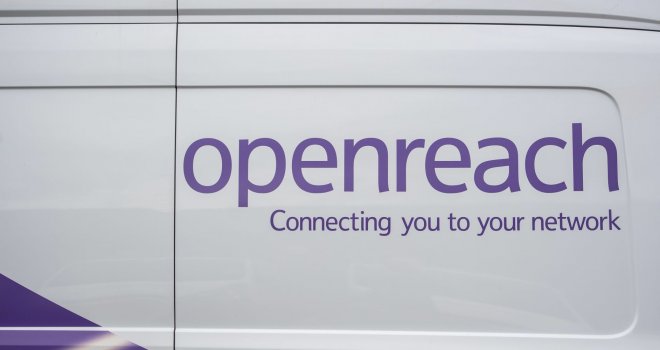8 Ways To Streamline Your Hiring Process Successfully

Hiring the right talent can make or break a business. But let’s be honest—recruitment can feel like an uphill battle, especially when juggling multiple roles, tight deadlines, and ever-changing job markets. If your hiring process is feeling clunky or time-consuming, it’s time to smooth things out.
- Clarify Your Job Descriptions
First impressions matter, and in recruitment, that starts with your job posting. A vague or overly complicated job description can lead to unqualified applicants or missed opportunities with strong candidates. Instead, focus on creating clear, concise, and compelling descriptions.
What does that mean in practice? Lay out the essential duties, qualifications, and what success in the role looks like. Use straightforward language, and avoid drowning candidates in corporate jargon. The goal is to help applicants understand exactly what’s expected while showcasing what makes your company an attractive place to work. A well-crafted job description not only saves time on unnecessary interviews but also attracts candidates who align with your needs.
- Use Pre-Employment Testing
Pre-employment testing, particularly tools like the PXT assessment, is a game-changer for modern hiring. These assessments dig deeper than a CV ever could, analyzing a candidate’s skills, personality traits, and cognitive abilities. They help you understand whether someone is not just qualified on paper but also the right fit for your company culture and specific role.
The beauty of using assessments like PXT is the data they provide—objective, actionable insights that help you make informed decisions faster. Instead of guessing, you’re using concrete evidence to pinpoint candidates who align with your needs and values. And because this step comes early in the hiring process, it saves time further down the line by weeding out mismatched candidates before interviews.
- Automate Wherever Possible
Time spent on repetitive tasks is time wasted. With today’s technology, there’s no reason to manually track applications, send interview reminders, or sift through piles of resumes. Recruitment software can take care of these tedious steps for you.
Applicant Tracking Systems (ATS) are particularly effective. They can automatically sort and rank resumes, flagging the best candidates based on your criteria. Scheduling tools can manage interviews, sending invites and reminders without you lifting a finger. By automating these administrative tasks, your team can focus on what really matters—connecting with top talent.
- Standardize Your Interviews
Consistency is key when it comes to interviewing. If every team member has a different approach, it’s hard to compare candidates fairly or get a clear sense of who’s the best fit. By standardizing your interview process, you can ensure every candidate is evaluated equally.
Start with a structured format. Prepare a set list of questions tailored to the role, mixing technical queries with behavioral ones. For example, if you’re hiring a project manager, ask about their organizational strategies and how they handle competing deadlines. Keep the same flow for all applicants to make side-by-side comparisons easier.
This approach not only speeds up decision-making but also leaves a professional impression on candidates. They’ll appreciate a process that feels thoughtful and organized.
- Embrace Remote Interviews
Let’s face it—not every candidate can easily travel to your office for an interview, and scheduling conflicts can slow things down. Remote interviews eliminate these hurdles, offering flexibility for both you and the candidate.
Video interviews, for example, are convenient, easy to schedule, and allow you to connect with talent across regions. They’re also an effective way to gauge communication skills and body language, just like an in-person meeting. Plus, they speed up the process by removing logistical headaches.
Just make sure you’ve got the tech side covered—test your platform, ensure a stable connection, and have a backup plan in case of glitches.
- Cut Down the Number of Rounds
It’s tempting to add extra interview stages to ensure you’re making the right choice, but too many rounds can backfire. Not only does it drag out the timeline, but it can frustrate candidates and even lead to losing top picks to faster-moving competitors.
Instead, focus on quality over quantity. Combine steps where possible, like integrating a technical test into a second-round interview. Make sure each stage has a clear purpose and moves the process forward. Streamlining doesn’t mean cutting corners—it’s about being intentional and efficient.
- Improve Communication with Candidates
Have you ever applied for a job and heard nothing for weeks? That lack of communication can leave candidates feeling undervalued—and might even tarnish your company’s reputation.
A streamlined hiring process includes regular updates. Let applicants know where they stand, even if it’s just a quick email confirming you’ve received their application. If they’ve made it to the next stage, provide clear details about what’s coming next and when they can expect to hear back.
Engaged candidates are more likely to stick with the process, even if it takes a little longer than expected.
- Track and Refine Your Process
Finally, don’t set your hiring strategy on autopilot. Regularly review what’s working and what’s not. Is your ATS flagging the right resumes? Are your interview questions uncovering the information you need? Are you seeing high drop-off rates at certain stages?
Use data and feedback to make continuous improvements. For example, if you notice a bottleneck in scheduling, consider integrating a more robust calendar tool. If candidates keep turning down offers, revisit your compensation packages or employer branding.
The goal is to keep evolving. A well-oiled hiring process isn’t static—it adapts to changing needs, trends, and technologies.
Build a Better Process That Works for You
Streamlining your hiring process doesn’t mean rushing or cutting corners. It’s about working smarter, not harder—using tools, strategies, and a little creativity to attract and secure the best candidates efficiently.




